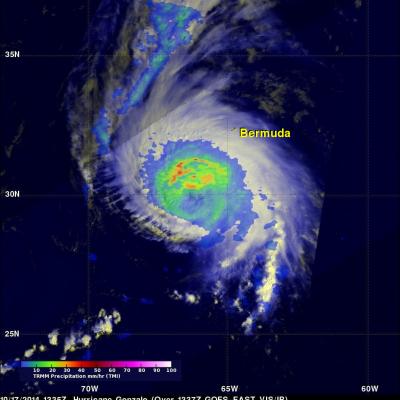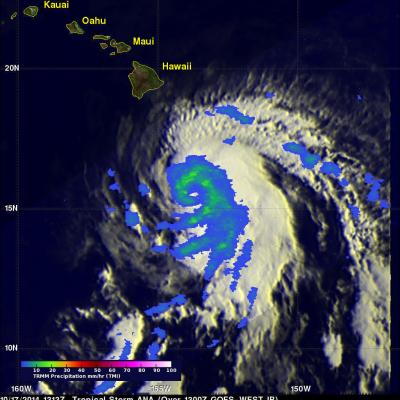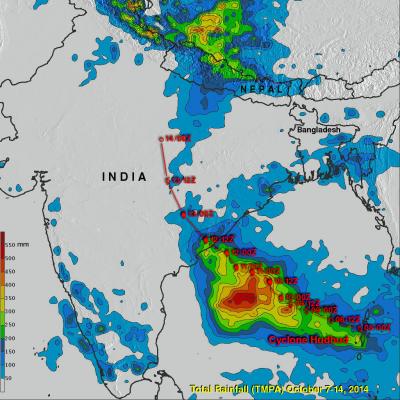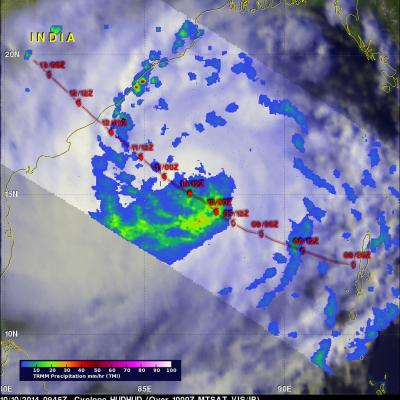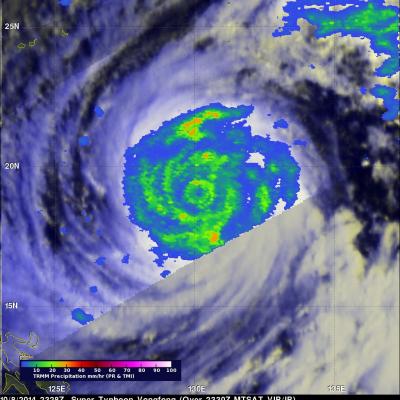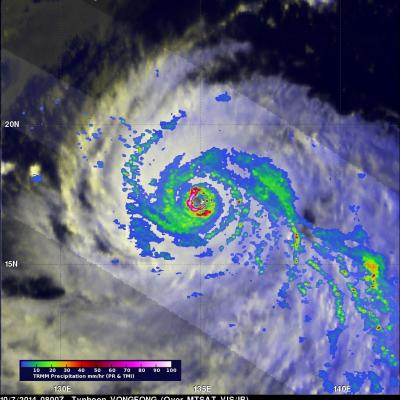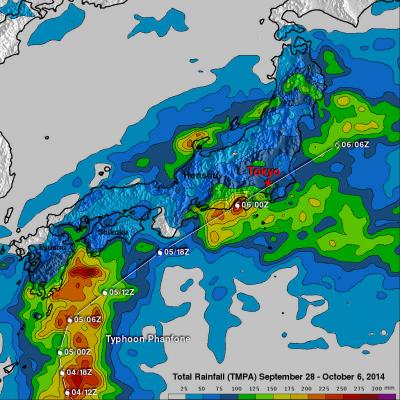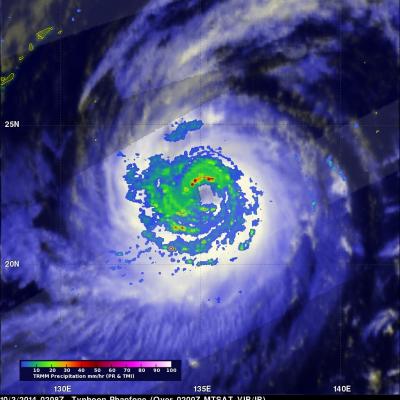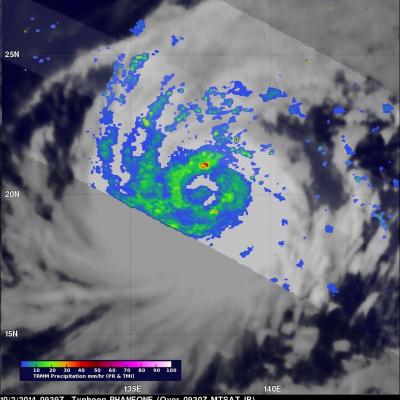Rainfall From Hurricane Fay and Gonzalo
Hurricane Fay battered Bermuda on October 12, 2014. The following Friday powerful Hurricane Gonzalo passed directly over the island on Friday October 17, 2014 causing flooding and damage to many structures. The remnants of Gonzalo also pounded the British Islands with winds exceeding 70 mph causing the death of at least one person. This image shows an analysis of rainfall around Fay and Gonzalo as they moved through the central Atlantic Ocean and over Bermuda. The analysis was based on near real time TRMM-based precipitation estimates (TMPA) that were produced by merging data from several



